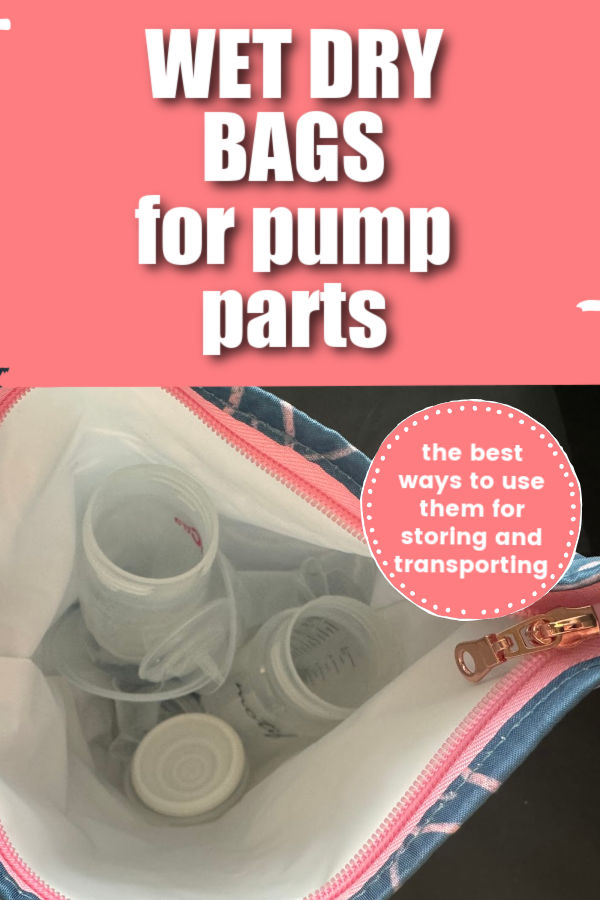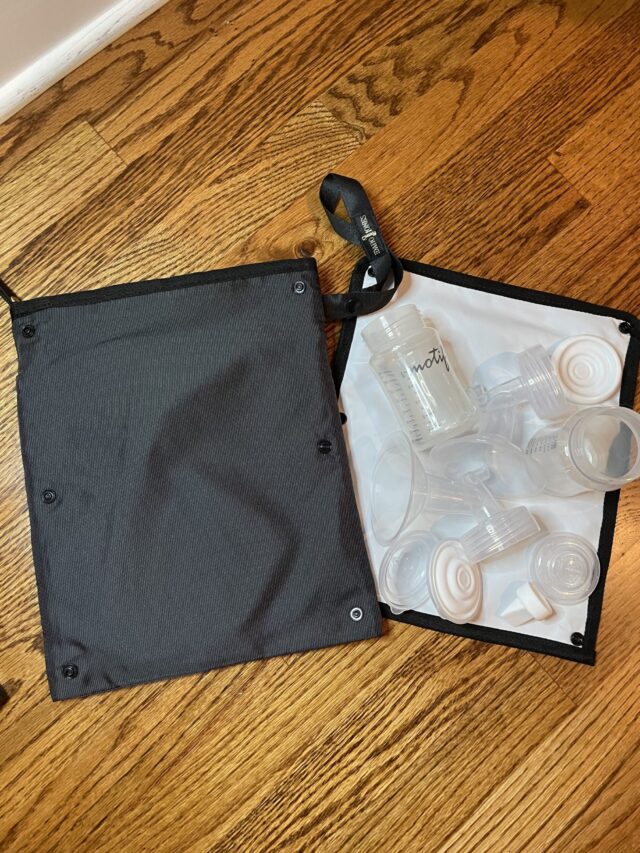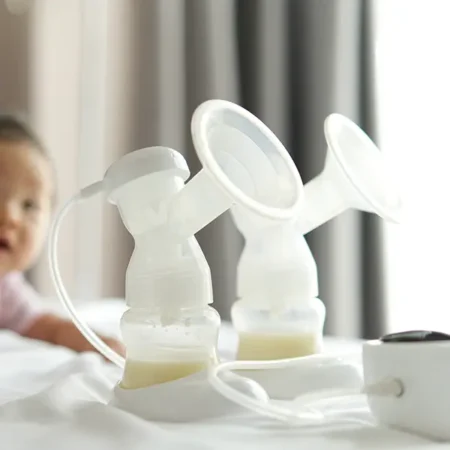Do you sometimes need to pump on the go or at work? Here’s how to use a wet dry bag for pump parts to make transporting everything easier and more sanitary.
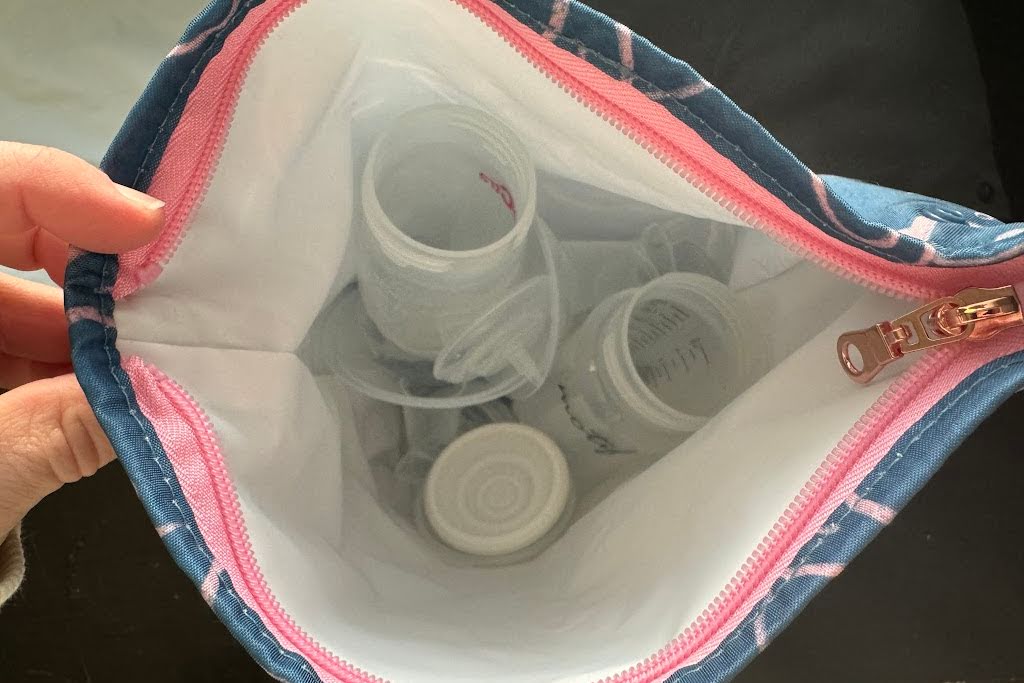
This post may contain affiliate links, which means if you click a link and purchase something, I may make a small commission at no additional cost to you. I only recommend products I love! More information here.
Why use a wet dry bag for pump parts?
These bags are most helpful when you’re packing your pump parts to pump at work or on the go.
1. Packing your pump parts before you pump
When you’re putting everything in your breast pump bag, you don’t want to lose little pieces like backflow protectors or duckbills somewhere in the bottom of the bag and have to dig for them.
Wet dry bags help you get everything organized, and they also keep your pump parts clean before you use them.
2. Keeping your bag clean after you pump
When you’re done pumping, your pump parts usually have some milk residue left on them, or can be wet if you rinsed them.
Putting your dirty pump parts in a wet dry bag can help keep the rest of your pump bag clean and dry.
3. The fridge hack
Finally, some people also use a wet dry bag for the “fridge hack,” where you put your pump parts in the fridge in between sessions without washing them.
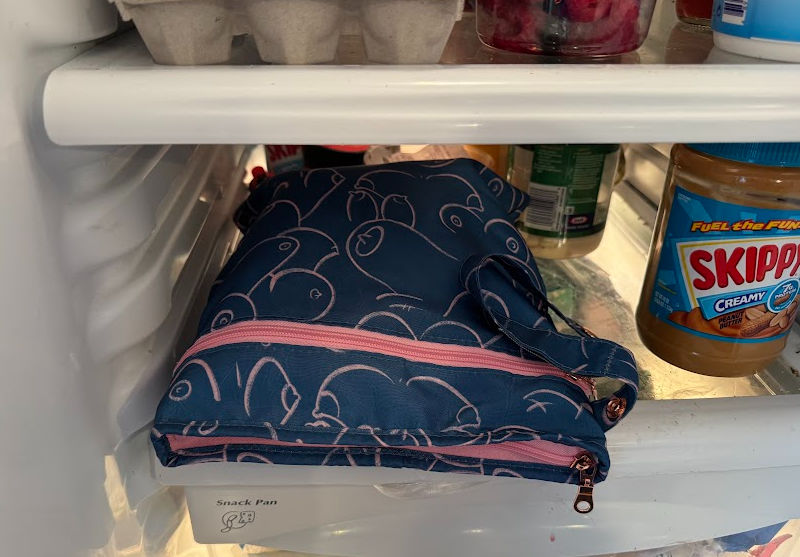
(Note that though the CDC acknowledges this as an option, they recommend washing after each use. This video is a great take on the fridge hack from an IBCLC.)
How to use a wet dry bag for pump parts
This is pretty easy – to use a wet dry bag, you just put your pump parts in the bag.
If you’re using the bag to store clean pump parts, I suggest putting them together before putting them in the bag.
This makes it easier to notice if you’re missing something, so that you can avoid sitting down to pump and realizing that you left your breast shields or a valve at home.
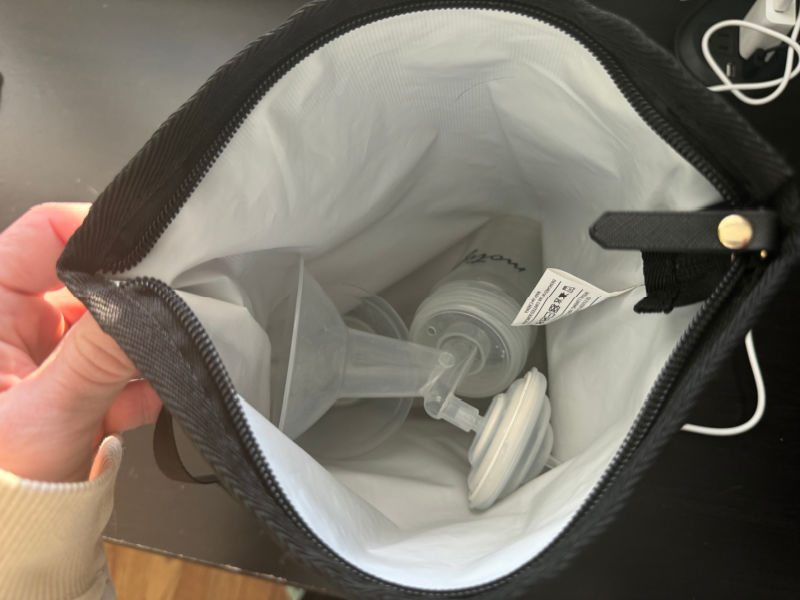
If you’re bringing multiple sets of pump parts with you (say, you’re going on a long flight or a road trip), you may want to bring multiple wet bags.
You could keep each set of pump parts in its own bag, or you could have one bag for clean parts and one for dirty parts – there are a lot of different ways that you can set it up depending on how many sets and bags you have.
Best wet dry bag options
Here are some of the best options for reusable bags for pump parts.
1. Idaho Jones Robin
This Idaho Jones bag is the one shown in the stories above. It’s insulated, has a staging mat, and has a pocket in the front that you can use for wipes, breast pads, etc.
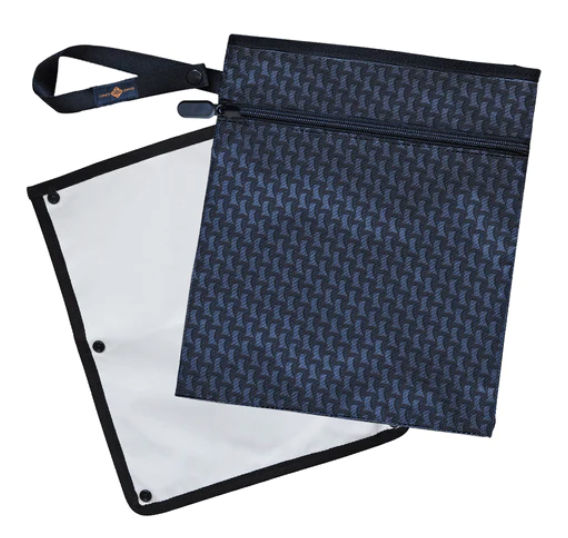
The fact that it is insulated makes it useful for transporting bottles, even when you’re not pumping. You can fit several bottles and an ice pack in it, and it’s easy to throw in the diaper bag.
You can use EPUMP10 at checkout for 10% off on any Idaho Jones bag.
2. Pumparoo
I used the Pumparoo for several years to transport my pump parts back and forth from work and really liked it. It’s also insulated and comes with a staging pad.
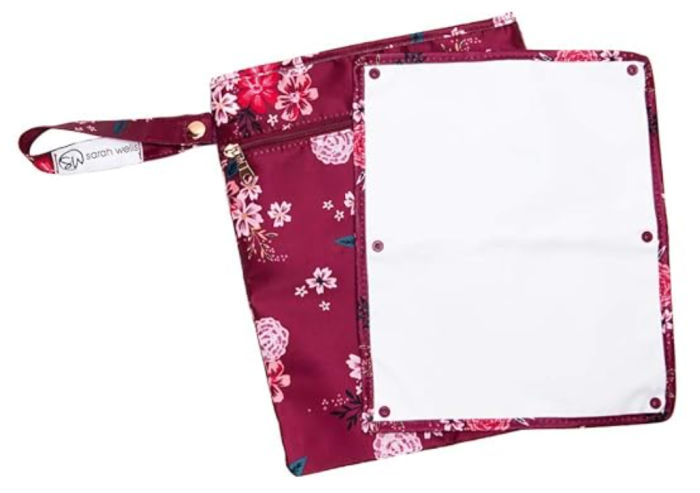
Also, when you’ve weaned from the pump, you can use it for any number of things – putting wet swimsuits in, packing your lunch, etc.
You can get 15% off any Sarah Wells bag with the code EPUMP.
3. Boob Bag
This super cute Boob Bag is a great bag to keep your pump parts and other accessories in.
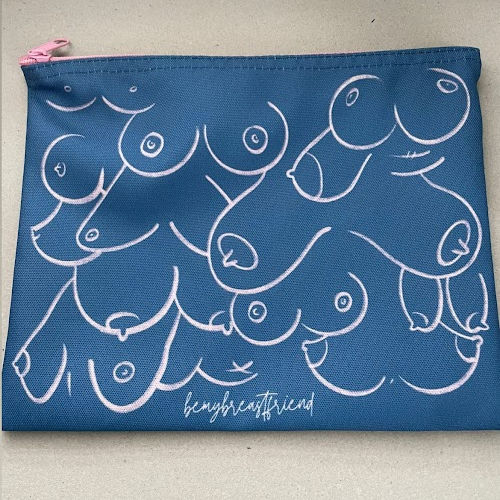
It’s not insulated, but it works really well for transporting all of your small pumping gear.
What are the downsides to using wet dry bags for pump parts?
The only one that I have identified in months of use is that with the insulated bags, you usually can’t put them in the dryer.
I put my first Pumparoo in the dryer by mistake and ruined it. (It was my fault – I knew better, but just forgot to pull it out when I was moving laundry from the washer to the dryer.)
Additionally, line drying isn’t ideal, because it took about 24 hours to dry when I hung it up, and I needed to use it every day.
My solution to this was to buy two. Every day, I washed a big batch of bottles and pump parts, and then I washed the Pumparoo in the sink. I hung it up to air dry and then used the other one until the next day.
Have you used a wet dry bag for pump parts? Tell us how it worked for you in the comments!
